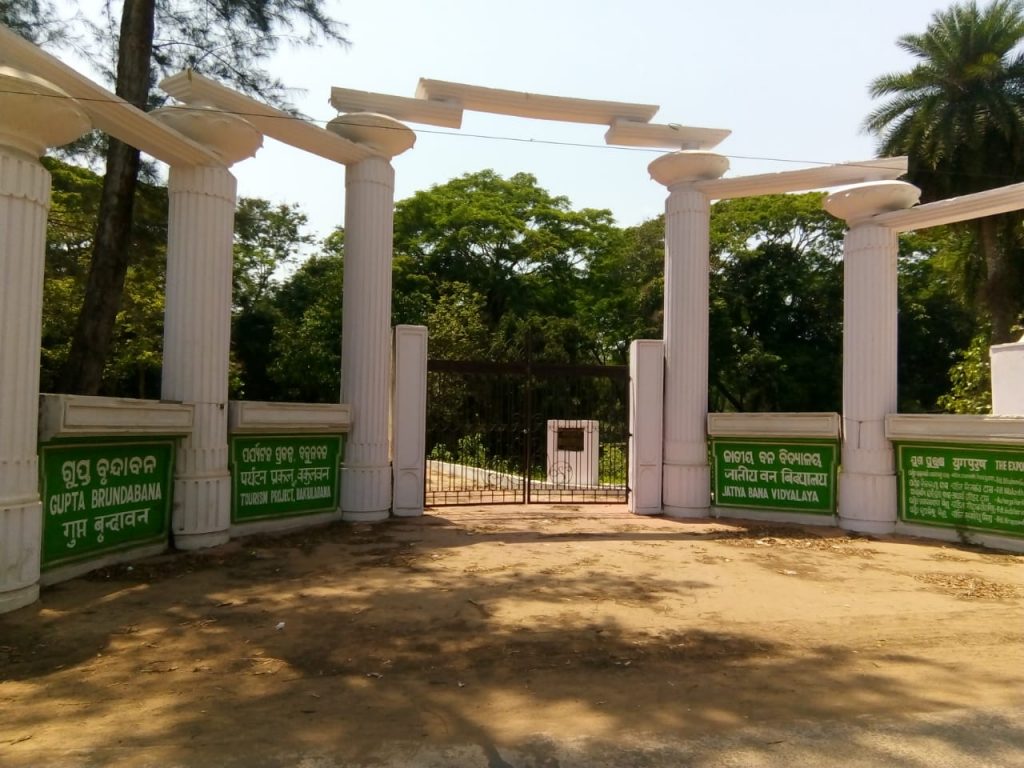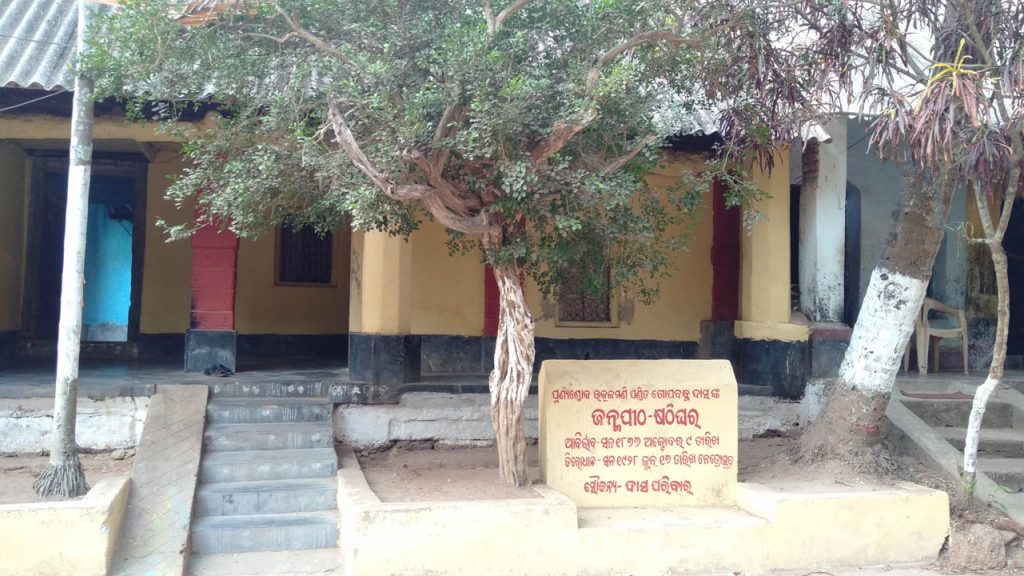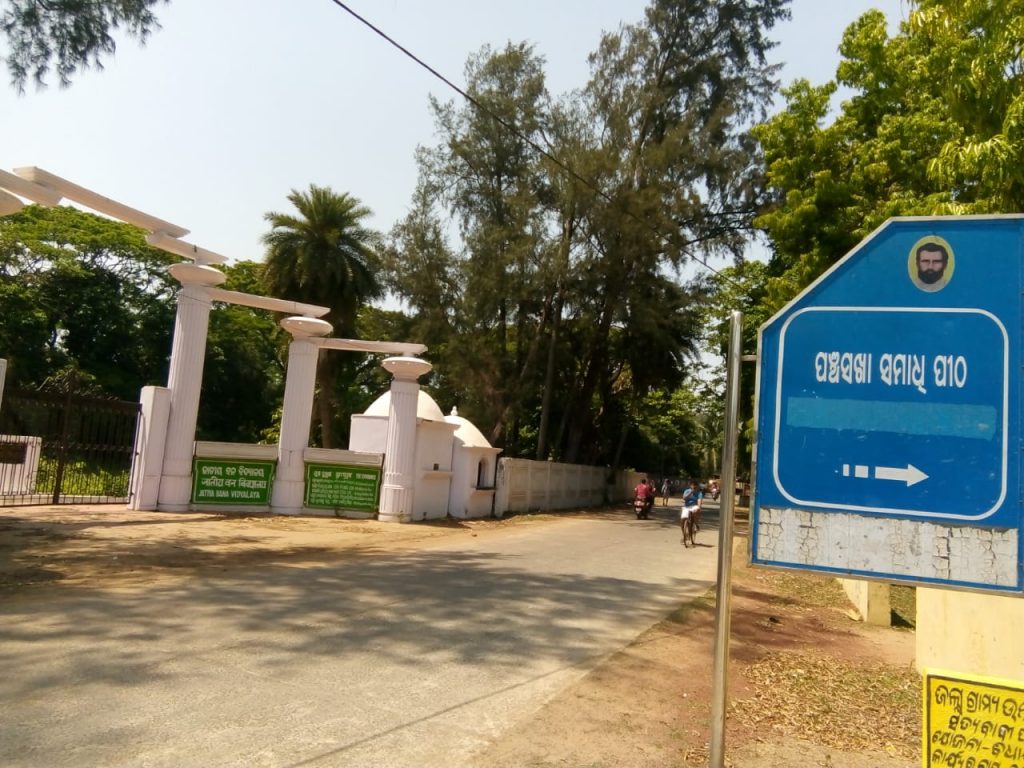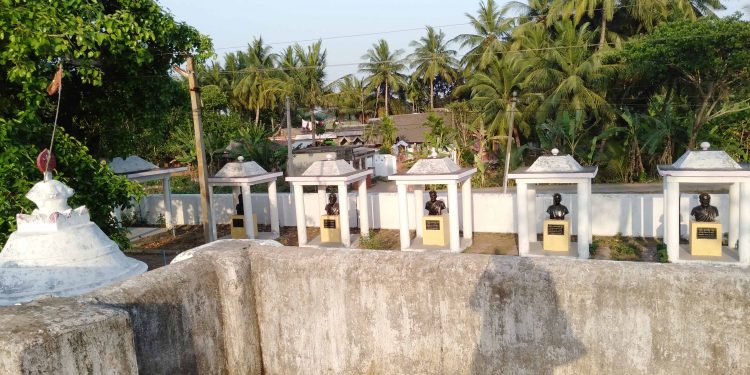More than a decade before India achieved Independence, Odisha became a separate province on April 1, 1936. A three-decade long struggle starting from 1903 and a lot of sacrifices made by modern Odisha’s key architects like Maharaja Krushnachandra Gajapati, Fakir Mohan Senapati, Utkal Gourab Madhusudan Das, Gangadhar Meher, Sriram Chandra Bhanja Deo, Utkalamani Gopabandhu Das, Biswanath Mishra and Pandit Nilakantha Das resulted in the creation of an independent united Odisha state. All of them played significant roles in shaping the destiny of the Odia people and making Odisha vibrant and prosperous. Yet, the birthplaces of Utkalmani Gopabandhu Das and Biswanath Mishra lie neglected as Sunday POST discovered recently.
Utkalamani Gopabandhu Das
A visit to Suando, the birthplace of Utkalmani Gopabandhu Das, whose role in the formation of the state needs no special mention, reveals that his ancestral house is in ruins. A statue of Gopabandhu can be seen in the room where he was born, claimed his descendants. Outside the house stands a bust of the tallest freedom fighter of the state. Local politicians and officials turn up at this house twice a year – on his birth and death anniversaries – to offer floral tributes. No government has so far bothered to renovate the house though it witnesses a regular inflow of visitors.

Gopabandhu played a major role in organising the first convention of Utkal Sammilani, the association that fought to make Odisha a separate state, in 1903. He went on to become its president in 1919. However, the great nationalist and one of the main architects of modern Odisha, passed away in 1928, eight years before the formation of Odisha. Subash Chandra Bose once called him the ‘Father of the National Movement in Orissa’ while Lala Lajpat Rai described him as ‘The uncrowned king of Orissa.’ It was Acharya Prafulla Chandra of Bengal who first described him as ‘Utkalmani’ or ‘Jewel of Utkal.’ Apart from being an active sentinel of the Odisha movement, he was a great freedom fighter, educationist and social reformer. In the words of Mahatma Gandhi, Gopabandhu was one of the noblest sons of Odisha.
Born to Swarnamayi Devi and Daitari Das on October 9, 1877, Gopabandhu lost his mother shortly after his birth. He was brought up by his aunt Kamala Devi who became a widow at a very early age.
During his Ravenshaw days along with Acharya Harihara and Braja Sundar Das, Gopabandhu used to help flood victims. He did his MA and LLB in Calcutta. Unfortunately, his wife passed away the day he received his LLB result. He was 28 then. By that time, he had lost all his three sons. So, he left his two daughters with his elder brother and decided to dedicate his life to the welfare of the people.
During his stay in Calcutta, he took steps to open night schools to teach the Odia coolies and cooks living there. His political career began when he joined the Utkal Sammilani in 1903. During one of the meetings, he voiced his opposition to Madhusudan Das’ suggestion that Odia-speaking areas be amalgamated with the Bengal Presidency. When he was elected to the Legislative Council in 1917, his work focused on issues such as amalgamation of Oriya speaking tracts of Bengal, Central Province, Madras and Bihar and Odisha under one common administration, permanent measures for eradication of flood and famine in Odisha, and restoration of Odias’ rights to harvest salt without paying excise duty, and spread of education.

It was because of Gopabandhu that a post-graduation course in English and Bachelor of Law classes were started in Ravenshaw College and a Sanskrit College in Puri. It was his legislative acumen which convinced the government to convert vernacular schools into English medium schools. Gopabandhu attended the Calcutta AICC session and later the Nagpur session. He persuaded Mahatma Gandhi to include the question of the formation of linguistic provinces in the Congress programme of reorganisation. A resolution in support of this mission was passed at the Nagpur session. This very resolution being the major objective of the Utkal Union Conference also, Gopabandhu advocated merger of the conference with the Congress. It would make the Odia movement a part of the Indian national movement.
What they say
Chhabilata Das, grand daughter-in-law of Gopabandhu Das, says, “The birthplace of Gopabandhu sees a long queue of political leaders on his birth and death anniversaries. They come up with a to-do list for the development of Suando, but nothing is done. We are accustomed to this as we realise that the present political leaders hardly feel for him or his birthplace. Visiting Gopabandhu’s birthplace is an image-building process for them.”
Gopabandhu’s grandson and caretaker of his house Rabindranath Das said, “Had Gopabandhu taken birth in Kolkata, his birthplace won’t have been in such a state. We hardly expect anything now. We depend on the income from the meagre agricultural land that is left with us. We are seven brothers but only two of us stay here. As there is no assistance from any quarter, we repair the house on our own. We are willing to leave the place if the government makes alternative arrangements for us. He was a member of the Lok Sevak Mandal. However, its members never attempted to revamp his birthplace.”

It is well-known that Rabindra Nath Tagore thought of establishing Shanti Niketan in Kolkata after visiting Bakula Bana Vidyalaya which was set up by the five iconic leaders Utkalamani Gopabandhu Das, Acharya Harihar Das, Pandit Nilakantha Das, Pandit Godabarisha Mishra and Pandit Krupasindhu Mishra, popularly known as ‘Pancha Sakha’. Bakul Bana Bidyalaya functioned as per the gurukul tradition. Apart from residential schooling, Gopabandhu emphasised on inculcating patriotism among students through education. When caste-based oppression became rampant, his gurukul system allowed children of all castes and backgrounds to sit, dine and study together. The gurukul was converted into a high school and got affiliation from Calcutta University in 1914. It was affiliated to Patna University in 1917 and became a National School in 1921. But following financial difficulties, the school finally shut down in 1926.
“After lying in a state of dilapidation for a long time, Bakula Bana was given a facelift in 2009. However, the school was not made functional. The state government has recently decided to set up the Odia University which will help in the propagation of the ideals of the Pancha Sakha. But when it comes to renovation of Gopabandhu’s birthplace, we have no expectation from the government, “says Rabindra.
Biswanath Mishra
Sunday POST visited the birthplace of Odisha’s first barrister Biswanath Mishra at Nuasomespur village in Satyabadi. His ancestral property has fallen into ruins and is surrounded by bushes. Thanks to the efforts of his grandsons, a statue was set up in front of the house a few years back. Apart from that, there is nothing of note at his place of birth.
Biswanath was born October 18, 1878. Even though he was born in a poor family, he went on to become the first barrister of Orissa after studying in England. Biswanath’s family was ex-communicated from his village when the villagers came to know that he had crossed the seas and gone to England for higher education. Biswanath came back to India as a qualified barrister in July 1912. He was conferred with the title of ‘Utkal Ratna’ at a meeting in 1914 or1915 by the intelligentsia.
Biswanath played a major role in the Odia movement to bring all Odia-speaking tracts under one administration. He was twice elected to the Central Provincial Assembly, in 1922 and1930, where he was addressed as Mr. Orissa for his untiring efforts to unite Orissa. He was an active participant of Utkal Sammilini. It is unfortunate that one of the founding fathers of Orissa state and one who worked relentlessly for the recognition and upliftment of the Odia language has been ignored for so long.
Sunday POST came to know that not a single government official visits his birthplace to pay homage on his birth and death anniversaries.
Biswanath’s participation in the Utkal Union Conference of 1903 under the guidance of Madhu Babu had set the stage for the union of Odia provinces. At that time, Gopabandhu had also formed his ‘Young Utkal Association’ in Cuttack and that was a source of inspiration for Biswanath.
In those days, Ganjam was under the Madras Presidency. The administration engaged some Telugu teachers, who barely knew Odia, to teach Odia students. There was a need to appoint more Odia-knowing teachers for the growth of the Odia language. So, Biswanath joined as an Odia teacher in Rasulkonda (Bhanjnagar) training school in 1904. This teaching assignment was also part of an unwritten agreement which Gopabandhu had with people like Barrister Biswanath Mishra, Harihar Acharya, Pandit Godavarish, Pandit Nilakantha and Pracharaka Ananta Mishra. They didn’t join government service formally but volunteered to educate students by teaching them in Odia.
What they say
Sarat Chandra Mishra, a retired teacher of the village, says, “Biswanath’s grandchildren formed the Barrister Biswanath Mishra Trust and installed a statue in 2014. Besides that, nothing has been done for the development of his birthplace. Lack of support from the administration is responsible for this.”
His grandson Suresh Chandra Mishra says, “In 1977, a function was held in the village to pay homage to him. The function was graced by many ministers of the state. That was the last time when ministers and other dignitaries were in this village. This place has been in neglect ever since. Biswanath did his best to create Odisha. But he is a forgotten hero now. After my retirement, I came to the village and started looking after his property.”
RASHMI REKHA DAS, OP







































